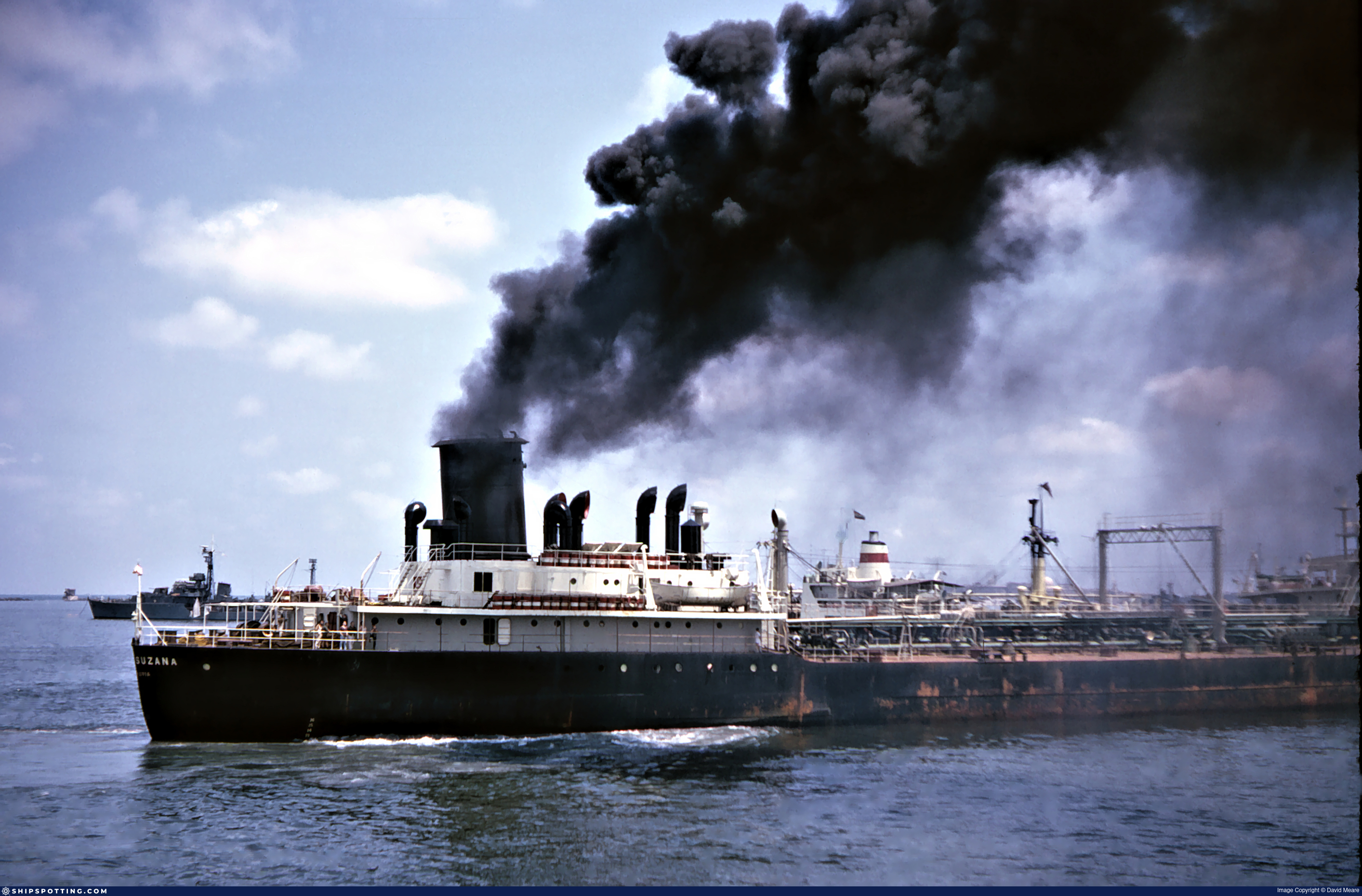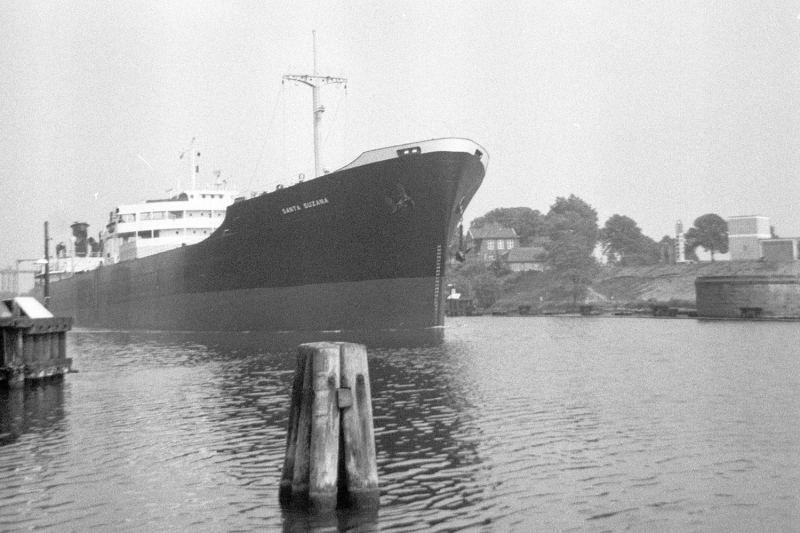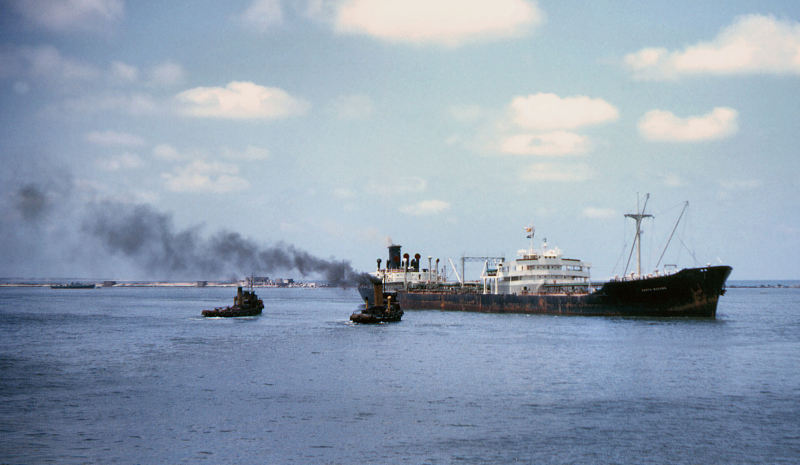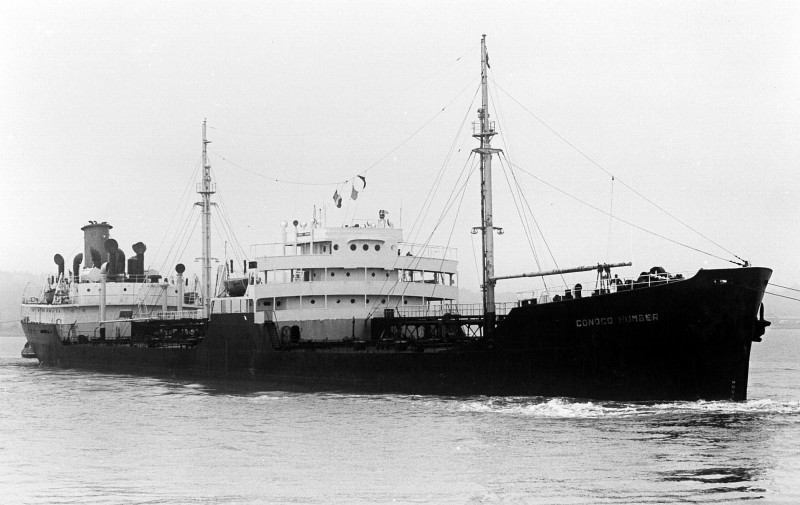
®
SHIPSPOTTING.COM
WELCOME TO SHIPSPOTTING.COM
Santa Suzana - IMO 5426170
Photo
details
Photographer:David Meare [ View profile ]
Title:Santa Suzana
Location:Alexandria, Egypt
Photo Category:Ship's Deck
Added:Sep 22, 2021
Views:4,252
Image Resolution:2,827 x 1,840
Description:
Taken at Alexandria harbour in about June 1965 as she passed the London Confidence, on her way to a berth to discharge a cargo of grain.
[DA]
Vessel
particulars
IMO:5426170
Photos:4 photos by 3 photographers
AIS Position
of this ship
There is no AIS Position Data available for this ship!
Would you like to add AIS Coverage?

Photo
Categories
This ship exists in the following categories:
Ship's Deck - 1 photos
Tankers built before 1970 - 3 photos







COMMENT THIS PHOTO(14)
Edit
comment
Regards Frank
Edit
comment
Cheers! Dave
Edit
comment
Then that stern was removed in 1967 and replaced with the stern of Ponca City and renamed Seafarer and she sailed on until scrapped as Burmah Topaz in 1976.
Now Ponca City ex Fort Henry was owned by Conoco. Conoco now had a cargo section from Ponca City -probably in v poor condition - along with a machinery section from Atlantic Ranger/Santa Suzana - probably also in poor shape.
But for scrap value and a very simple welding job ( Identical hulls) plus connecting up some pipework they had a 'new' ship.
Maybe they had time to run on a charter? Dunno. However she only lasted for 2 years before going to the breakers as Conoco Humber.
I hope this has helped understand what happened to what ship.
Officially it would have been Atlantic Ranger that went to the breakers in 1969 and Fort Henry in 1976.
Some more pics here http://www.aukevisser.nl/t2tanker/id814.htm
Edit
comment
Edit
comment
If you can get hold of a copy of 'Victory Ships and Tankers' by Sawyer and Mitchell a whole page is given over to a flow chart of what happen to which bits and when. It has only left me more confused.
The original modification to Atlantic Ranger - this ship - made sense. Waneta at 29,000 DWT and only 12 years old was a black oil tanker so her tanks must have been in good condition and at a good price with the added benefit of extra DWT.
Replacement of the machinery section of Santa Suzana suggests she had had a boiler meltdown or some such but the cargo section was worth keeping. http://www.shipspotting.com/gallery/photo.php?lid=1743188
The cargo section seen in the attached link is the third hand Waneta one.
This is making my brain hurt......
Edit
comment
Edit
comment
Edit
comment
Edit
comment
T2s were turbo electric and the power plant just lasted forever and a day.
Sadly the cargo section did not. Steelwork in the tanks was uncoated and if carrying clean products the bulkheads were quite porous well under 20 years.
So it made sense to fit a new cargo section ( the cheap bit ) to the old power plant ( the expensive bit ).
Two side stories -
- I recall Conoco was the first to build tankers with coated tanks in the mid 60's.
- We would always try to give the Classification Society tank surveyor a torch with almost flat batteries so he couldn't see the extent of the wastage :)
Edit
comment
Yes, me too but she was oozing with character and through the binoculars her crew looked like the cast of Pirates of the Caribbean. a memorable sight not to have been missed.
Edit
comment
Edit
comment
Edit
comment
T2-SE-A1
Built October 1945 by Sun Shipbuilding Company, Chester, Pennsylvania,
as "Atlantic Ranger" # 2707, for Atlantic Refining Co., Philadelphia.
1954 - Tanker Transport, Inc., Monrovia [Atlantic Refining Co.], LI, 435
1963 - ANGELA , Cia. Naviera Continental S.A., Monrovia [Ocean Shipping & Trading Corp., New York]
1964 - Cia. Naviera Angela S.A., Monrovia, [do.]
1964 - SANTA SUZANA, Seacrest Investment Co., Inc., Monrovia [Mercantile Navigation Co., Nassau - Mosvold,
Glastad & Hannes], forebody scrapped, machinery section joined to forebody of tanker WANETA
built Bethlehem, Quincy, 1952, resulting vessel 17,563 grt, 597.6 x 84.4'
Dismantled 1967 - forebody joined to machinery section of tanker PONCA CITY (built 1943 by Kaiser, Swan
Island as FORT HENRY), resulting vessel named SEAFARER, (US o/n 506676)
Machinery section joined to forebody of tanker PONCA CITY, resulting vessel,10,602 grt, 522' 10" x 68' 2"
1067 - SUZANA S., s/o
1967 - CONOCO HUMBER, World Wide Transport, Inc., Monrovia [Continental Oil Co., New York], 2826
Broken up at La Spezia 1969 by Cant. Navali di Portovenere S.p.A.,
arrived 14.07.1969, work began in 08.1969.
IMO No: 5426170
Year: 1945
Name: ATLANTIC RANGER
Type: Tanker
Launch Date: 31.08.1945
Flag: USA
Date of completion: 10.1945
Tons: 10250
DWT: 16613
Yard No: 532
Length overall: 159.6
Ship Design: T2-SE-A1
Country of build: USA
Beam: 20.7
Builder: Sun
Location of yard: Chester, Pa
Number of screws/Mchy/Speed(kn): 1TE-15
Subsequent History: 1963 ANGELA -
[ 1964 Lg & widened 181.3 x 25.7 mtr, 17563 grt / 27764 dwt ] -
1964 SANTA SUZANA -
[ 1967 shortened & narrowed 159.3 / 152.1 x 20.8 mtr, 10602 grt / 16811 dwt ] -
1967 SUZANA S. - 1967 CONOCO HUMBER
Disposal Data: Scrapped at La Spezia 14.07.1969. [ by CN di Portovenere ].
Edit
comment